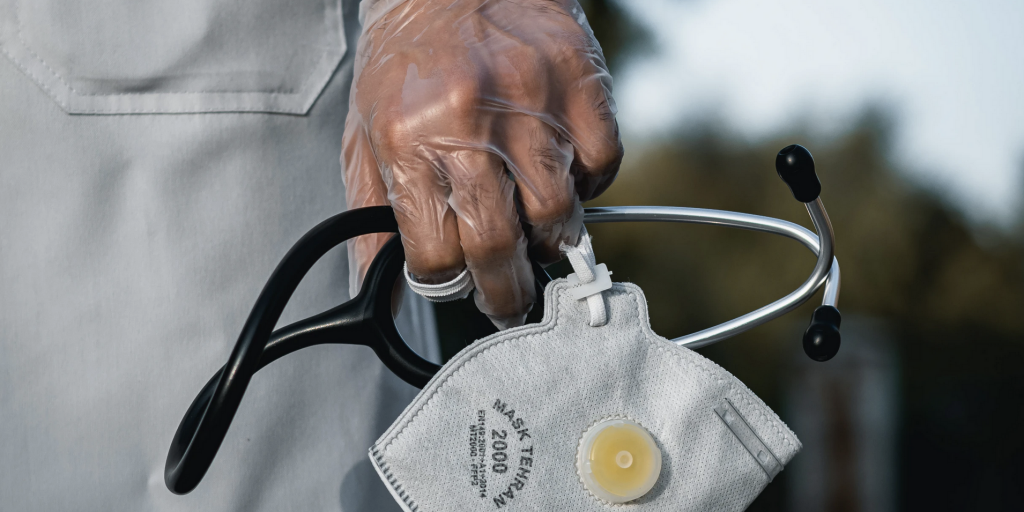El Paso P3 partnering across borders for a shared mission: COVID recovery
Though public private partnerships (P3s) have historically focused on real estate and infrastructure development, in recent months, P3s have created unique citywide and statewide COVID-19 recovery solutions. COVID-centered P3s have enjoyed success, from conception to implementation, by capitalizing on multiple stakeholders’ willingness to connect during high stakes situations to best provide resources that could save lives.
During this crisis, it became clear that a pandemic response can’t be tackled solely by governments, as entire communities are affected (e.g., healthcare providers, schools, employers). Though public health is the current focus, post pandemic, cities and states won’t need to invest in public health to this extent. COVID partnerships though, which emerged from urgency, and their unconventional approaches, can serve as models beyond crisis management, to routinely enable better public services at lower costs.
The COVID-19 Enhanced Regional Public Health Partnership, formed in El Paso, Texas, is an example of how to create a successful P3 across borders, that has a potential lifespan beyond the pandemic.
As the first of its kind for COVID recovery, this El Paso P3 intentionally crossed borders to tackle the crisis regionally, in support of El Paso (Texas), Ciudad Juárez (Mexico), and Las Cruces (New Mexico). It focused on improving communication and coordination between public sector officials, healthcare providers and private sector partners, with the aim of strengthening the region’s collective capacity to respond to the COVID-19 pandemic.
The P3 also brought non-traditional partners to the table to support the response when resources were low to fill in the gaps. El Paso, the Medical Center of the Americas Foundation (MCA), the Paso del Norte Health Foundation, Battelle, and UT-Houston School of Public Health serve as primary members of the partnership, and 30 additional community leaders and organizations signed on to be “coalition partners.”
El Paso: Crisis Mode
Even before the pandemic, El Paso was not a stranger to crisis situations. For years, it had been at the epicenter of immigration policy changes. Most recently, it coped with the aftermath of a mass shooting that killed and injured dozens. As a result, the city’s Emergency Operations Center (EOC) and many of its citizens have been in a constant state of emergency, stressing the public health capabilities in the region.
With that in mind, it was vital for El Paso to not only create a partnership that supported sister cities struggling with their own crises, but to adopt the right approach for this type of partnership for events that might occur moving forward.
A Cooperative Approach Vs. a Formal Approach
Public-private partnerships are generally highly structured with various rules and regulations and thus take a long time to implement. Adding the element of cross-border concerns, issues and logistics can easily complicate and slow down the process. Though the social and economic context doesn’t necessarily change when you cross borders, the laws in which they govern usually do, which can add a lot of red tape. This is a key reason why cross-border P3s are not actively pursued, despite the benefits they may yield.
The COVID-19 Enhanced Regional Public Health Partnership bypassed many of these challenges by keeping the partnership largely informal. There were few signed agreements, official governance documents and processes, or formally assigned staff. The partnership was structured as a cooperative rather than a legal vehicle, focused on coordinating each organization’s capabilities to meet the overall needs of the communities as effectively and efficiently as possible.
The P3 began with a coalition of people collaborating to assist one another, as opposed to a legalized structure with numerous terms and conditions, commitments, and obligations. Stakeholders focused on what connects El Paso, Ciudad Juárez, and Las Cruces, rather than what separates them, allowing for mutual support during an unprecedented time. As the partnership moved forward, that lack of formality remained and ultimately enabled the flexibility to work across borders quickly and easily.
The benefits of this unconstrained, rapidly established P3 was the creation of connections across organizations, a level of trust between these partners, and a track record of success. As a result, whether the ultimate goal is to expand this P3 or to establish a new one for resolving different issues, such as homelessness or access to healthcare, stakeholders will have a legacy of success with documented efficacies of this partnership model.
Revitalizing the P3 Model
Prior to the COVID crisis, P3s generally tackled development and real estate issues, but this pandemic allowed cities and states to be able to create social and health related P3s. While a revenue stream was a necessity for a P3 before, that’s no longer the case. The El Paso partnership, like many COVID-recovery P3s, are ultimately revitalizing the P3 model and widening the approaches that can be taken for a results-driven public-private partnership.
Mark Howard is a Managing Director leading the state and local government consulting practice with Alvarez & Marsal. He has spent 35 years as a government executive and a consultant to governments. Emma Wollschlager Schwartz is President of the Medical Center of the Americas (MCA) Foundation.




















